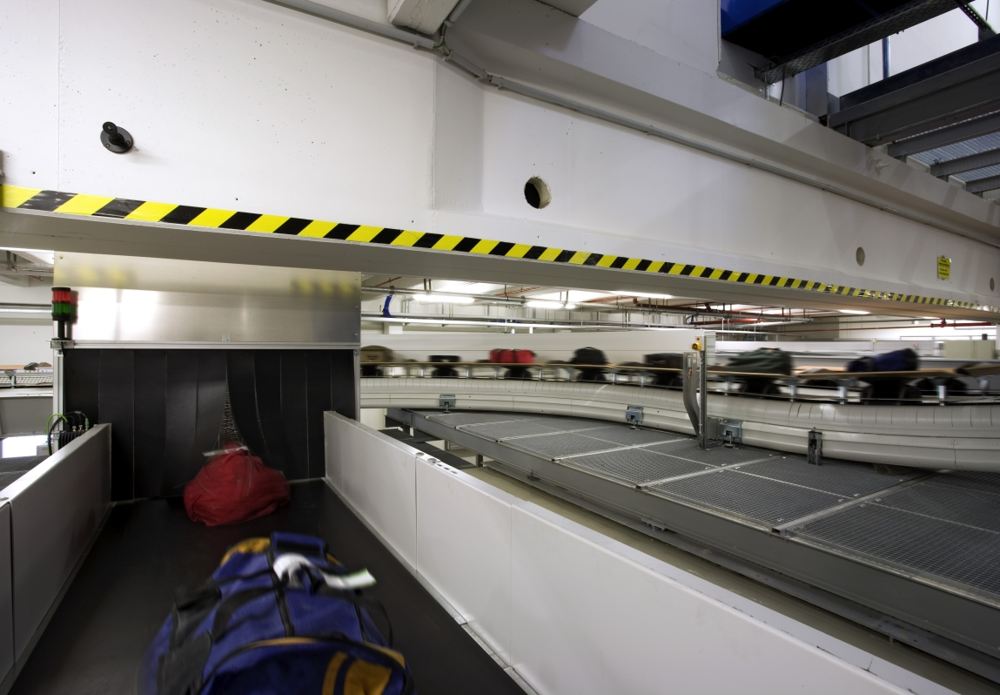Airports and governments worldwide are investing heavily to upgrade aging baggage systems. Many existing systems are decades old, prompting public and private spending on new technology. In the U.S., for example, the FAA reports over $465 million granted to 25 airports specifically for replacing or upgrading baggage-handling systems (faa.gov). This funding, from the Bipartisan Infrastructure Law, targets airports whose BHS equipment “is 30 years old and nearing the end of usefulness” (faa.gov). Denver International Airport alone received $124 million to install a new, energy-efficient BHS that can handle growing passenger numbers (faa.gov). Similarly, an October 2024 USDOT announcement allocated $970 million across 125 airports (via the Airport Terminal Program) for terminal modernizations, explicitly including new baggage systems (transportation.gov). For instance, Denver also got a separate $15M grant in this program to reconstruct its baggage system and oversized-lift conveyors (transportation.gov).
- Government Grants and Loans: In Europe, governments and development banks play a key role. The European Investment Bank (EIB) recently provided a €175 million loan to Amsterdam’s Schiphol Airport – part of a €400M total package – to fund a “new baggage basement” that will replace its existing handling system (eib.org). Schiphol is undertaking a €6 billion infrastructure overhaul, including this BHS upgrade (eib.org). Other EU funds (e.g. Cohesion Policy) have also been used for airport improvements in outer regions. In Asia, some governments directly finance major airports: for instance, the Chinese government’s investment in Beijing Daxing (opening 2019) included one of the world’s largest BHS installations to date.
- Private Sector and Vendors: Many airports operate as public–private partnerships, with concessionaires investing in baggage tech. Major baggage system suppliers (Siemens, SITA, BEUMER, Vanderlande, etc.) report rising demand. Industry data shows the global airport baggage-handling market was $9.4 billion in 2023 and is forecast to reach ~$14.3B by 2030 (businesswire.com), a compound annual growth around 6–12%. This growth is driven by surging passenger traffic and the need to automate. In practice, airports award contracts for sophisticated BHS projects: for example, Madrid’s new Terminal 4 expansion has extended automated baggage conveyors across multiple levels, and two Vietnamese airports have contracted Vanderlande to install modern sorting systems (futuretravelexperience.com). As airports expand to 40+ million passengers per year (e.g. Atlanta at ~104M in 2023 (mordorintelligence.com), the “above 40 million” category of airports is seeing especially large investments in new BHS capacity.
- Technological Upgrades: Investments focus on automation, tracking, and sustainability. New systems feature powerful RFID readers and IT platforms for real-time bag tracking (which helps meet IATA’s Res. 753 requirements (mordorintelligence.com). Robotics and AI are being incorporated: for instance, an experimental self-driving “baggage train” is being trialed to shuttle baggage carts across ramps (internationalairportreview.com【113†】. Airports like Eindhoven have added mechanical lifts to reduce strain on workers (internationalairportreview.com). Sustainable design is also a priority: modern conveyors use energy-efficient motors and LED lighting, and some airports (e.g. Schiphol’s new sorting area) aim to reduce footprint by stacking systems in “baggage basements” (eib.org).
- Case Examples: London Gatwick and Cincinnati CVG are trialing robot tugs to move luggage autonomously (internationalairportreview.com). At the user end, many airports have installed self-service bag drop kiosks (some using biometrics) to expedite check-in (internationalairportreview.com). These are backed by baggage-sorting improvements behind the scenes. In Manchester Airport’s recent USD 1.65B terminal upgrade, a key element was a state-of-the-art BHS in Terminal 2 to speed processing (mordorintelligence.com). In Africa, Addis Ababa’s airport recently added RFID readers at transfer points to quickly route bags for Ethiopian Airlines.
In summary, the infrastructure investment in baggage handling is massive and growing. Driven by record passenger numbers and safety/security regulations, airports and authorities are pouring funds into next-generation systems. Whether via U.S. federal grants (faa.gov)(transportation.gov), European bank loans (eib.org), or private contracts, the goal is to build faster, more reliable, and more sustainable baggage operations. These projects not only reduce lost-luggage rates but also create jobs and spur tech innovation across the industry.


